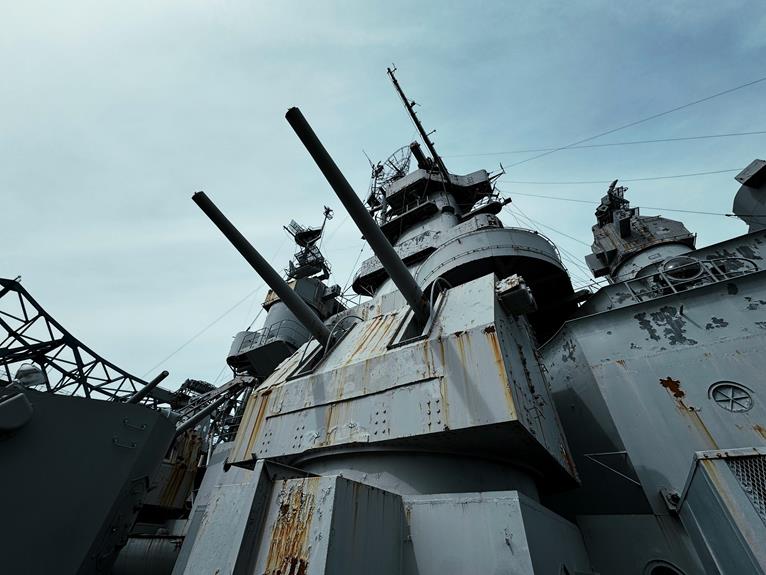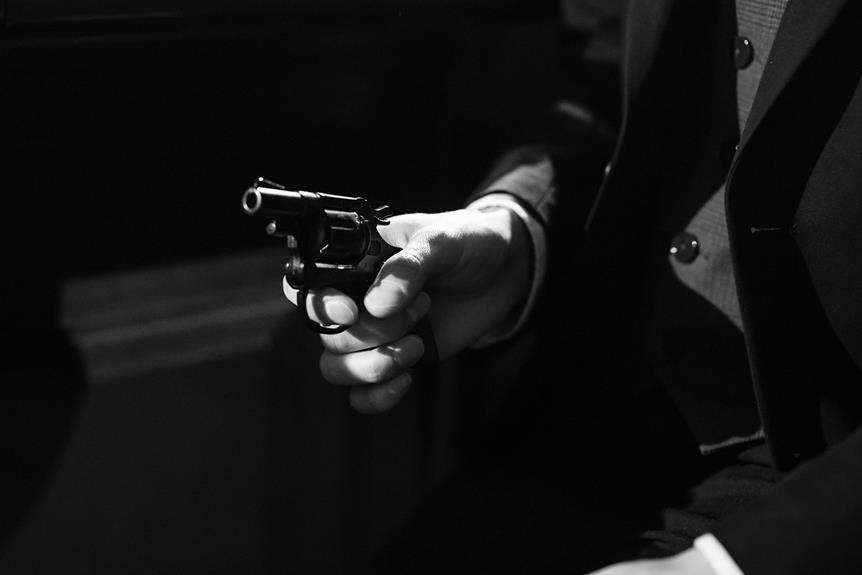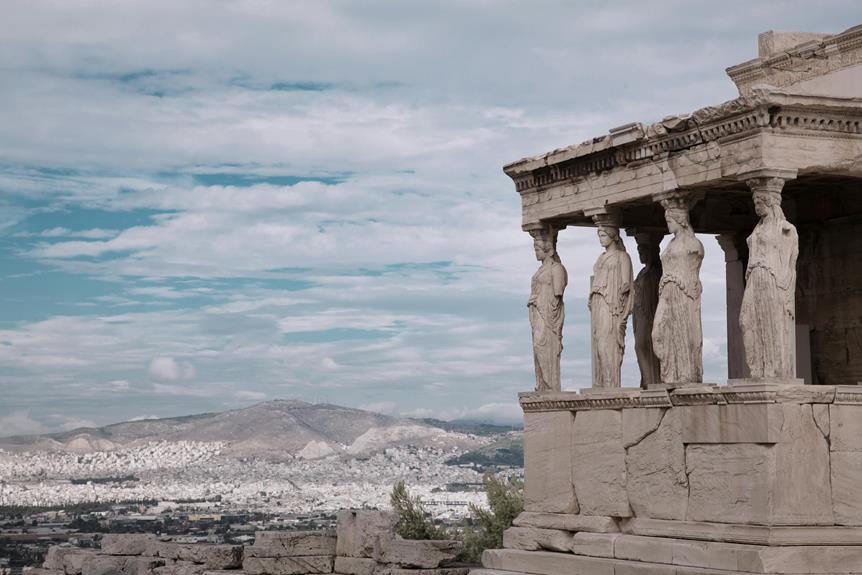The Museum of Death in the United States stands as a solemn proof to the inevitable journey every living being must undertake. With a collection that transcends mere morbidity, it offers a glimpse into the intricate tapestry of human emotions surrounding mortality. Through meticulously curated exhibits and immersive experiences, this institution serves as a gateway to understanding the complexities of death in various cultures and eras. As visitors navigate through its halls, they are confronted with the stark realities of life's ultimate certainty, prompting introspection and contemplation on the enigmatic dance between existence and the inevitable.
Key Takeaways
- Museum of Death has locations in Los Angeles, California, and New Orleans, Louisiana.
- Exhibits include death masks, Victorian mourning jewelry, and embalming tools.
- Features serial killer memorabilia section with personal items and artwork.
- Offers interactive tours exploring death rituals and cultural practices.
- Provides a hands-on experience to engage visitors with the subject of mortality.
Museum Locations
The Museum of Death has two locations in the United States, one in Los Angeles, California, and the other in New Orleans, Louisiana. These locations serve as hubs for exploring the intricate and often taboo subjects of death rituals and mortuary science.
In Los Angeles, California, visitors can explore the cultural and societal practices surrounding death rituals from around the world. From ancient burial rites to modern funeral customs, the museum offers a unique insight into how different civilizations have approached death throughout history. Additionally, the Los Angeles location provides a platform to learn about mortuary science, shedding light on the technical and scientific aspects of handling deceased bodies.
On the other hand, the New Orleans, Louisiana location delves deeper into the local death rituals and mortuary practices prevalent in the region. Known for its rich history of voodoo and unique funeral traditions, this location offers a more focused exploration of how death is perceived and commemorated in the southern United States.
Exhibits and Artifacts
Exploring the Museum of Death's assortment of exhibits and artifacts offers a comprehensive understanding of various death rituals and mortuary practices at both the Los Angeles, California and New Orleans, Louisiana locations. The museum's displays include a wide array of items that provide insights into forensic evidence and historical curiosities related to death.
| Exhibits | Description | Importance |
|---|---|---|
| Death Masks | Lifelike casts of faces taken post-mortem, used historically for identification and scientific study. | Reveals facial features for analysis |
| Victorian Mourning Jewelry | Jewelry made from the hair of deceased loved ones, popularized during the Victorian era. | Showcases mourning traditions |
| Embalming Tools | Tools and instruments used in the embalming process, shedding light on historical mortuary practices. | Demonstrates preservation techniques |
The Museum of Death's collection goes beyond mere fascination with death; it explores the practical aspects of handling mortality. Visitors can investigate the evolution of embalming techniques through the centuries and gain a deeper appreciation for the art and science of preserving human remains. Additionally, the museum's display of death masks provides a somber yet enthralling look into the faces of individuals long gone, offering a unique perspective on historical figures and ordinary people alike. By examining these artifacts up close, visitors can engage with the intricate details of death practices and the cultural significance they hold.
Serial Killer Memorabilia
Within the Museum of Death's collection, a notable section explores the world of serial killer memorabilia, offering a chilling glimpse into the dark histories of infamous individuals. True crime enthusiasts and those fascinated by the macabre are drawn to these artifacts, known in the collector community as 'murderabilia.' These items can range from personal belongings of serial killers to letters they wrote, artwork they created, or even pieces of clothing they wore during their crimes.
The allure of serial killer memorabilia lies in its ability to provide a tangible connection to some of the most notorious criminals in history. For some, owning these items serves as a way to investigate deeper into the psyche of these individuals, trying to understand what drove them to commit such heinous acts. However, the trade and collection of murderabilia have sparked ethical debates, with critics arguing that it glorifies criminals and profits from their atrocities.
Despite the controversy surrounding serial killer memorabilia, it remains a sought-after niche in the true crime community. The Museum of Death's curated collection offers visitors a rare opportunity to view these artifacts up close, allowing them to explore the darker aspects of human nature and the criminal mind. Whether viewed with morbid curiosity or academic interest, these items serve as reminders of the real-world horrors that have shaped our history.
Graphic Displays
Exploring the visual representations of violence and death, the Museum of Death's graphic displays offer visitors a stark and unfiltered look into the darker aspects of mortality and human behavior. These exhibits cater to a morbid fascination with taboo subjects, presenting a collection that probes the boundaries of traditional museum content. The intention behind these graphic displays is to evoke a range of emotions and reactions from visitors, often leveraging shock value to provoke introspection and dialogue about mortality, violence, and the human psyche.
The Museum of Death's graphic displays are designed to challenge societal norms and confront visitors with the uncomfortable realities of death. By showcasing graphic imagery, crime scene photos, and artifacts related to death and violence, the museum explores the darker corners of human existence. While these displays may shock some viewers and test ethical boundaries, they serve as a reminder of the fragility of life and the intricate relationship between life and death.
Through its graphic displays, the Museum of Death provides a platform for investigating complex and challenging themes that are often avoided in mainstream discourse. By confronting visitors with explicit content and provocative imagery, the museum invites reflection on mortality, violence, and the human experience in a way that is both confronting and thought-provoking.
Embalming Techniques
An integral aspect of the funeral industry, embalming techniques play a crucial role in preserving the deceased's physical appearance for viewing purposes and ensuring dignified post-mortem presentation. Throughout history, various embalming practices have been utilized to delay decomposition and maintain the deceased's aesthetic integrity. Historical embalming methods often involved the use of natural substances such as oils, resins, and spices to slow down the decay process and mask unpleasant odors. These techniques were rudimentary compared to the sophisticated processes employed in modern embalming.
In contemporary times, modern embalming methods have greatly advanced, incorporating scientific knowledge and technological innovations to achieve more effective preservation outcomes. Embalmers now utilize a combination of arterial embalming, cavity embalming, and hypodermic embalming to ensure thorough preservation of the body. Arterial embalming involves injecting embalming fluid into the circulatory system to disinfect and preserve tissues, while cavity embalming treats body cavities to prevent bacterial growth. Hypodermic embalming targets specific areas that require additional attention, such as the face for cosmetic purposes.
Moreover, modern embalming techniques prioritize not only preservation but also the restoration of a natural appearance for the deceased. Skilled embalmers use cosmetic techniques to recreate lifelike features, ensuring a peaceful and dignified presentation during viewings and funerals. By combining historical practices with modern methods, embalming techniques continue to evolve, providing families with the opportunity to say goodbye to their loved ones in a respectful manner.
Visitor Experience
Visitors to the Museum of Death in the USA are immersed in a thought-provoking exploration of mortality and the macabre. The visitor experience at the museum is designed to provoke contemplation and challenge societal taboos surrounding death. Interactive tours offer a unique opportunity for guests to engage with the exhibits, which showcase a wide array of artifacts and information related to death in various forms.
One of the highlights of the visitor experience is the historical context provided throughout the museum. Visitors have the chance to learn about different cultural practices and beliefs surrounding death, as well as the evolution of death-related rituals over time. This historical perspective adds depth to the exhibits and encourages visitors to reflect on how attitudes towards death have changed throughout history.
The interactive tours at the Museum of Death allow visitors to engage with the material in a hands-on way, creating a more immersive and memorable experience. By actively participating in the tour, guests can gain a deeper understanding of the subject matter and explore their own thoughts and feelings about mortality.
Controversies and Criticisms
Amidst the thought-provoking exploration of mortality and the macabre at the Museum of Death in the USA, various controversies and criticisms have emerged regarding the portrayal and treatment of death-related subjects within the museum's exhibits. While the museum aims to provide a unique educational experience, some ethical concerns and questions about sensitivity have been raised by visitors and critics alike.
- Ethical considerations: Some critics argue that the Museum of Death may sensationalize death and suffering for entertainment purposes, raising questions about the ethical implications of such a portrayal.
- Treatment of human remains: The display of human remains, such as crime scene photos and autopsy instruments, has sparked controversy over whether such exhibits respect the dignity of the deceased individuals.
- Impact on visitors: Concerns have been raised about the potential psychological impact on visitors, especially those who may have experienced trauma related to death or violence.
- Cultural sensitivity: Critics question whether the museum adequately considers diverse cultural perspectives on death and whether certain exhibits may be insensitive to specific cultural beliefs surrounding death and the afterlife.
As the Museum of Death continues to attract attention for its provocative approach to mortality, ongoing discussions about the ethics and sensitivity of its exhibits remain essential in shaping public perception and understanding of death-related topics.
Frequently Asked Questions
Are Children Allowed to Visit the Museum of Death?
Children's reactions to the content of the museum may vary, and parental guidance is important when deciding if a child should visit. Exposure to graphic or disturbing images can have a lasting impact on young minds. Parents should consider the maturity level and sensitivity of their child before allowing them to visit such a place.
Open communication and preparation can help mitigate any potential negative effects on children who visit the museum.
Is Photography Permitted Inside the Museum of Death?
Photography restrictions in cultural institutions vary widely, reflecting concerns over preservation, visitor experience, and intellectual property. For some, capturing memories through photos is integral to engagement, while others prioritize preserving the sanctity of the space.
Understanding the cultural significance of each institution's stance on photography can enhance the visitor's experience and respect for the establishment. It is advisable to check the museum's guidelines to guarantee compliance with their policies.
Can Visitors Touch Any of the Exhibits?
Visitors often seek an immersive experience when exploring interactive exhibits, yearning for a sensory journey that allows tactile engagement. In such environments, the allure of touching exhibits can heighten the encounter, enabling a deeper connection with the subject matter.
However, it is vital for institutions to establish clear guidelines to maintain the integrity of the displays while fostering a sense of freedom for visitors to engage with the exhibits in a respectful and meaningful manner.
Are There Any Live Demonstrations at the Museum?
Live performances are a popular feature in many museums, providing visitors with a dynamic and engaging experience. Interactive exhibits often complement these demonstrations, offering hands-on learning opportunities.
Such activities can enhance visitors' understanding of the subject matter and create memorable experiences. Live demonstrations add a layer of authenticity and excitement to museum visits, making them more immersive and impactful for attendees interested in a more interactive and engaging experience.
Is the Museum Wheelchair Accessible?
Ensuring accessibility accommodations is crucial for fostering inclusivity. When considering wheelchair accessibility, it is essential to evaluate various aspects such as entrance ramps, door widths, and elevator availability.
Providing clear pathways and ample space for maneuvering enhances the overall accessibility of a space. By prioritizing wheelchair accessibility, organizations can create an environment that welcomes individuals with diverse mobility needs, promoting freedom of movement and independence.
Conclusion
To sum up, the Museum of Death offers a fascinating exploration of mortality through its collection of artifacts and exhibits. Despite controversies surrounding its graphic content, the museum provides a thought-provoking experience for visitors to reflect on the delicate balance between life and death.
Like a shadow cast by the setting sun, the museum's displays serve as a reminder of the inevitable passage of time and the ephemeral nature of existence.


